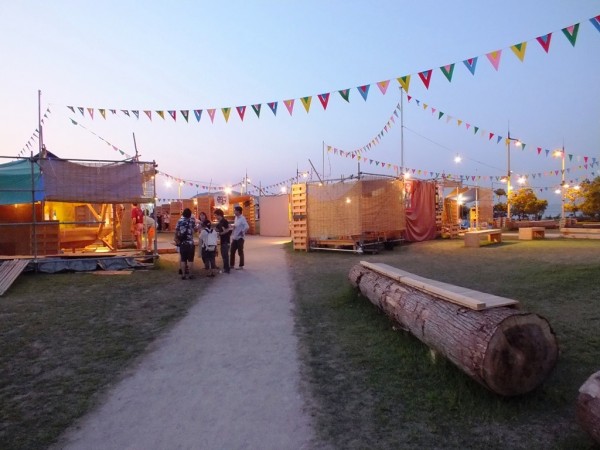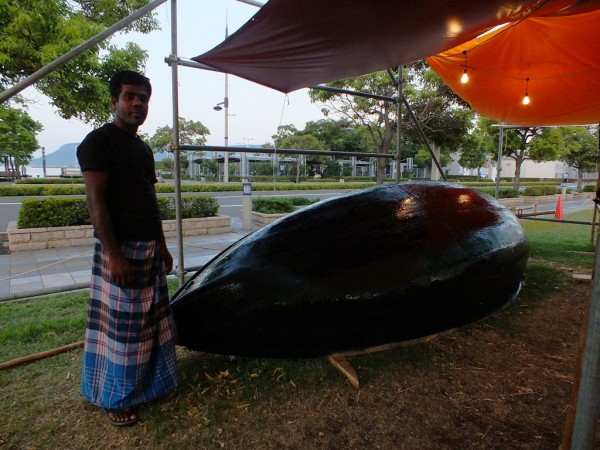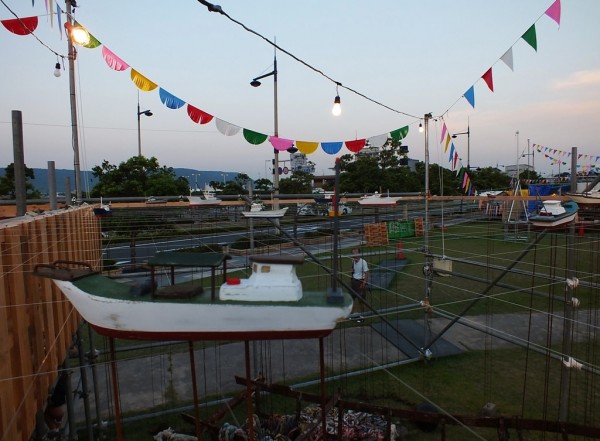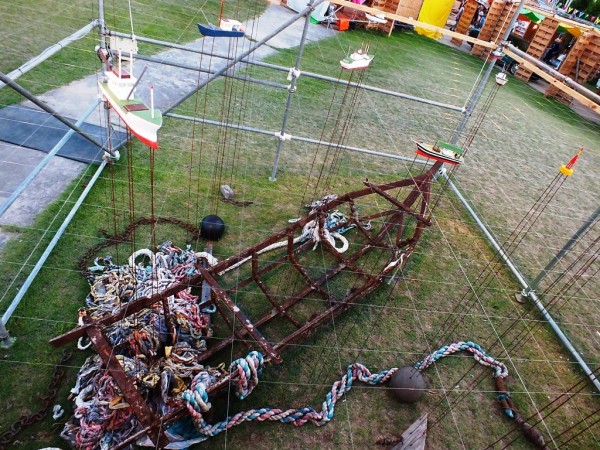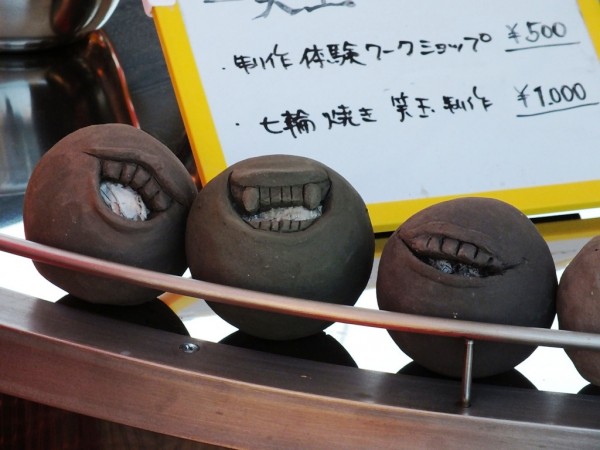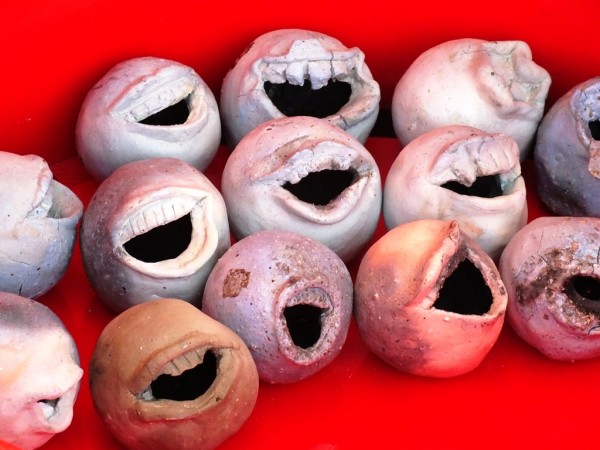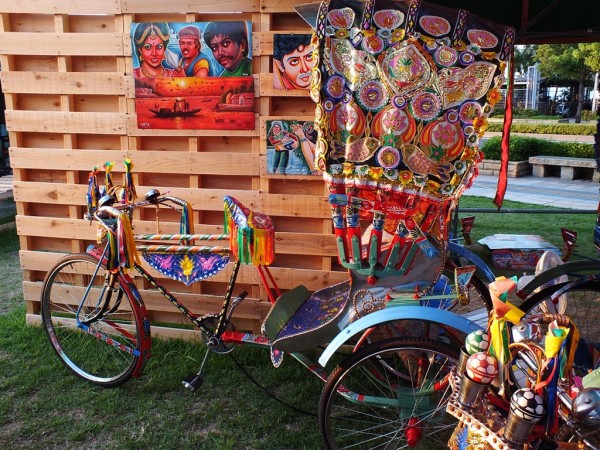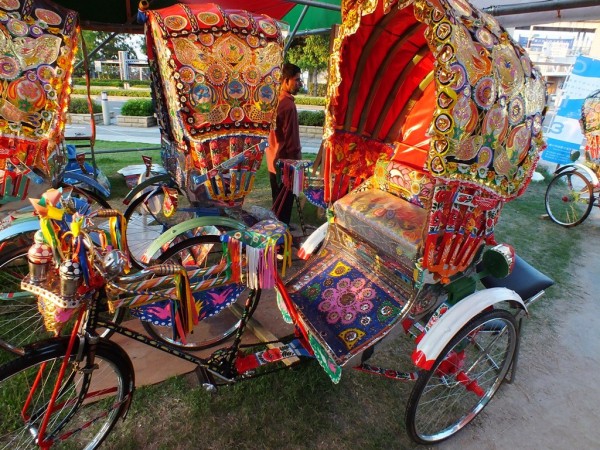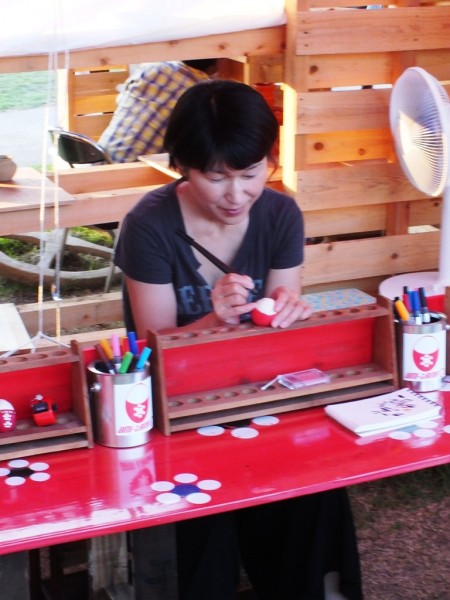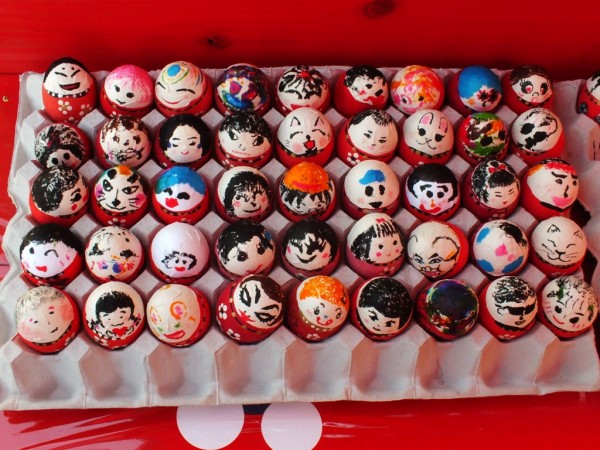All too brief stop at Bengal Island last week-end. We got there late, and as we start knowing a few people, we spent more time chatting (mostly with Wasama Doja and Takashi Nishibori and his assistants) than actually visiting, and we didn’t stop much in other places and booths. So very few pictures to show you today, and for some reason, most of them are from the Japanese artists.
The dinghy‘s hull had just been painted. It should be almost finished as I type those lines, and it will officially launched at the Takamatsu Sunport Marina on Sunday at 10am if you’re in town and interested (I’ll be there of course).
Bunpei Kado’s Deaming Boat is looking nicer and nicer.
Some of the Laugh Balls made by visitors under the supervision of Atsushi Yamaberi. More details about them soon. If all goes well this weekend, we’ll try to make some of them.
These rickshaws really are fascinating, aren’t they?
umi.tama Ⓖ (is that the lady’s nickname? the name of her organization? no idea) manages a workshop where anyone can create Little Girls of Sanuki, those little statuettes made from eggshells and inspired from traditional Kagawa papier-mâché dolls. The finished project will be exhibited at Shikoku Mura this coming october.
Seeing those, your first reaction may be that it’s not really high art. Sure, but one of the reasons I started to get interested in contemporary in Japan and not before may be related to that. As I’m trying to show you all year round on this blog, contemporary art in Japan seems to me to be very different from contemporary art in Europe and North America nowadays. It’s not trying to be pedantic, inaccessible. There is much less bullshit (excuse my French). It creates events like Bengal Island where artists work outside, in the sun and the heat and in contact with the visitors, a place where workshops are organized and allow the people to try to create art too. In other words, it’s an art that is closer to the people, more accessible, more democratic in a sense. An art that is closer to real life.
